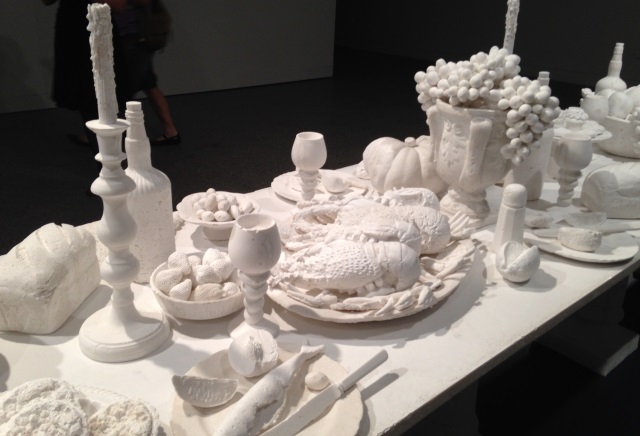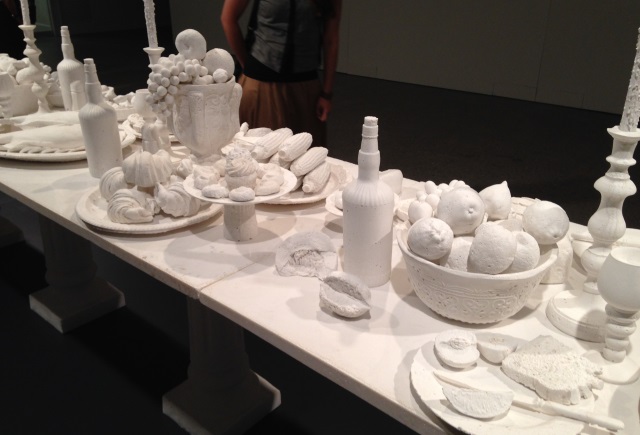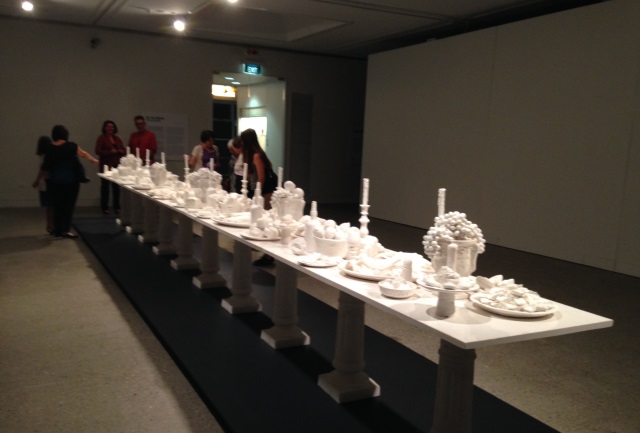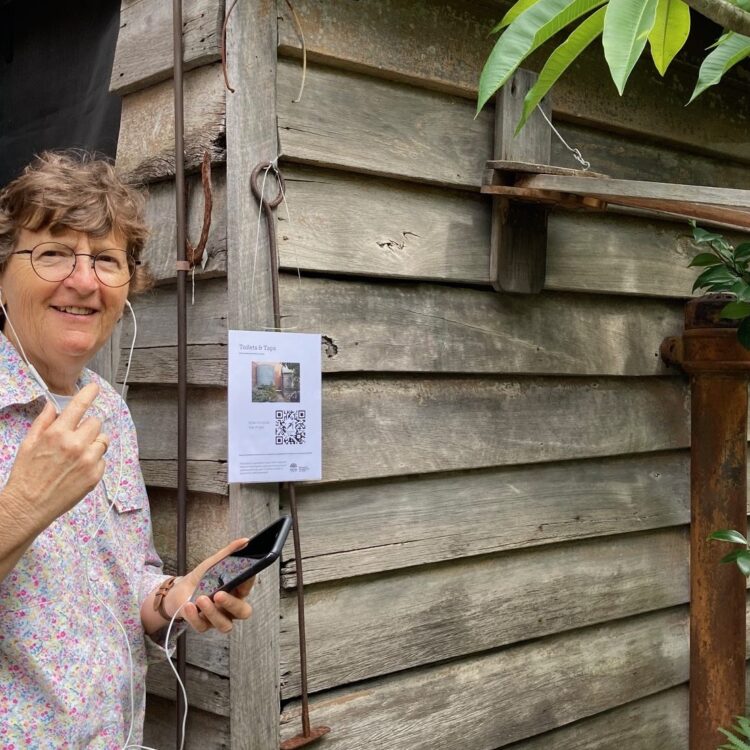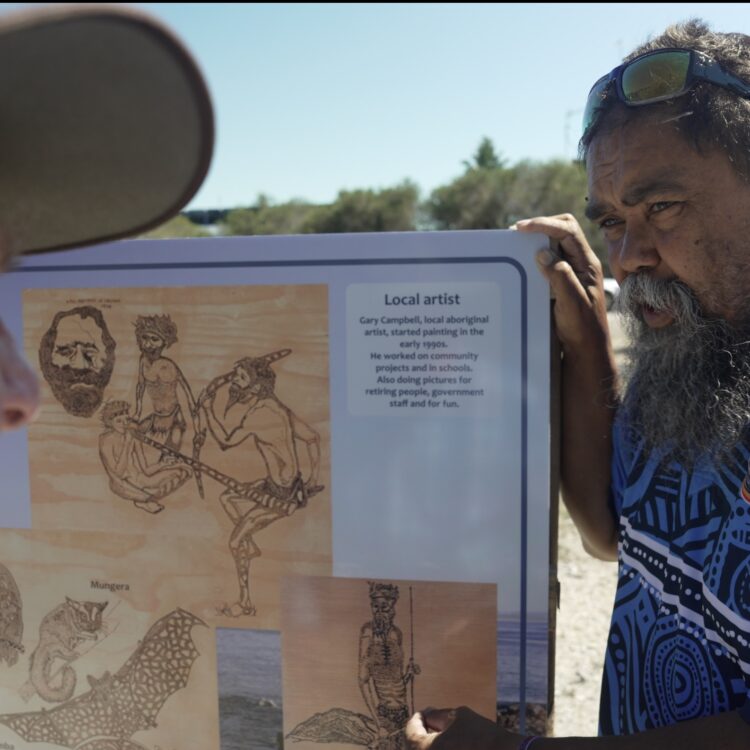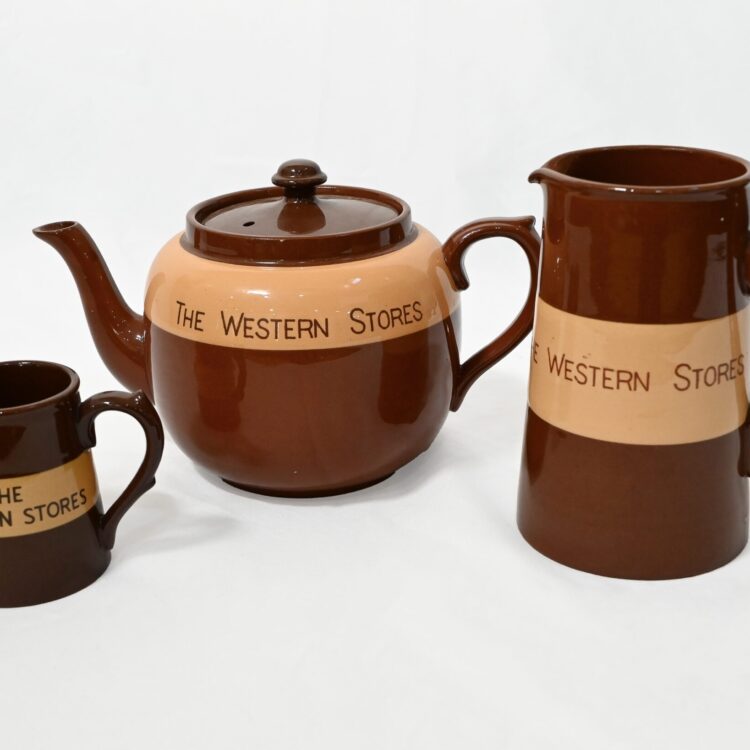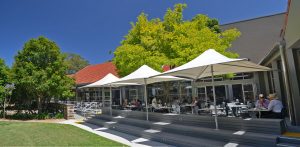Welcome to The Last Supper. A lavish array of fruit and vegetables–strawberries in bowls and citrus in segments. Filleted fish, clusters of oysters, prawns and giant lobster nestled on platters. Tiny tarts and sweet pastries, broken bread; crumbs on plates. Bowls of grapes, candlesticks and goblets of wine–a feast fit for a king adorns the nine-metre table before you.
Tempting, beckoning: come in, sit down, but taste not. For this Last Supper is made entirely from salt.
The Last Supper, recently commissioned by Hazelhurst Regional Gallery & Arts Centre is the latest sculptural work by Ken and Julia Yonetani, and continues a line of enquiry developed by the artists during a residency in Mildura. Here the duo witnessed first-hand the impact of salinity on the Murray Darling Basin, known as Australia’s ‘food bowl’ for the quantity of fresh food it produces.
The ‘last supper’ reference conjures a final and most desirable of meals, relying on the promise of death for complete fulfilment.
Every year, half a million tonnes of saline groundwater is pumped away from the Basin as agricultural processes, irrigation and land-clearing continue to damage the environment and render it unsustainable for future crop growth.
In this context The Last Supper is redolent with metaphor. Salt, historically treated as a sacred substance used to preserve food, when present in the environment hinders the growth and supply of that very food. Similarly, the ‘last supper’ reference conjures a final and most desirable of meals, relying on the promise of death for complete fulfilment.
Resembling the genre of still life painting, popularised in the 17th century when newfound methods of mass farming provided an abundance of food to the tables and parties of the bourgeoisie–the artwork appears as delicate and restrained yet is suffused with the subtext of indulgence and sloth.
The artists cast every element of the artwork including the expansive table and the hundreds of individual food stuffs using groundwater salt and fresh produce bought from the local area south of Sydney where they were based during the development of the work. Relying on a complex and secret process to set the salt hard as concrete then buffing and polishing each component, the end result is a stunning three-dimensional still-life with modern meaning.

